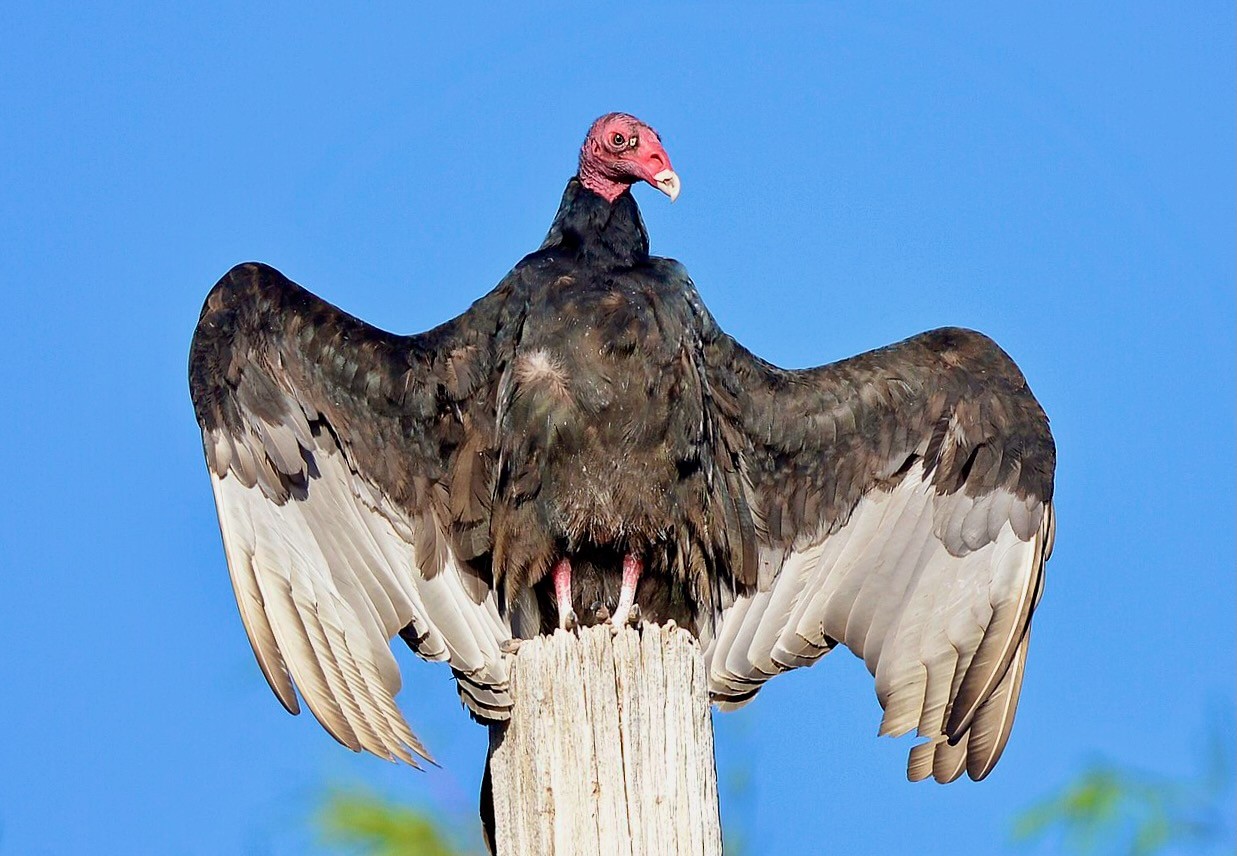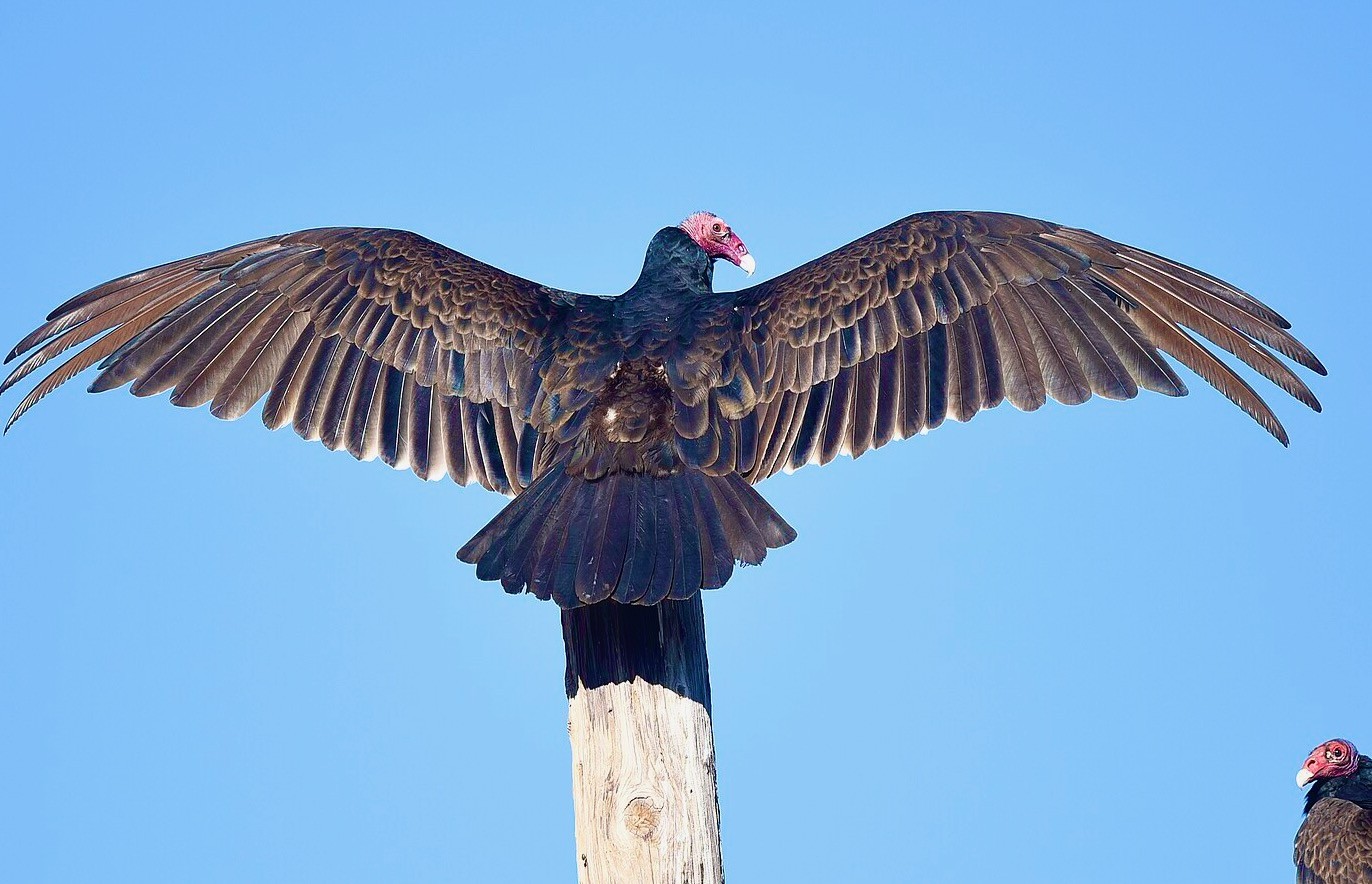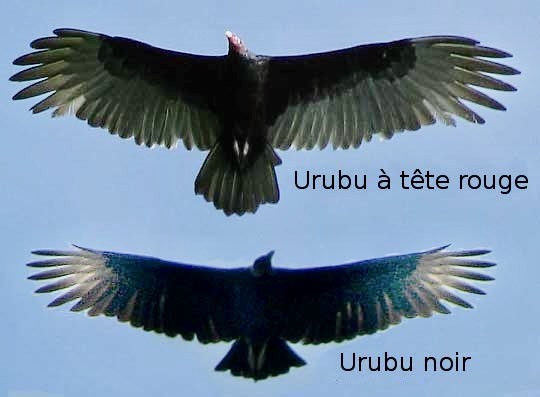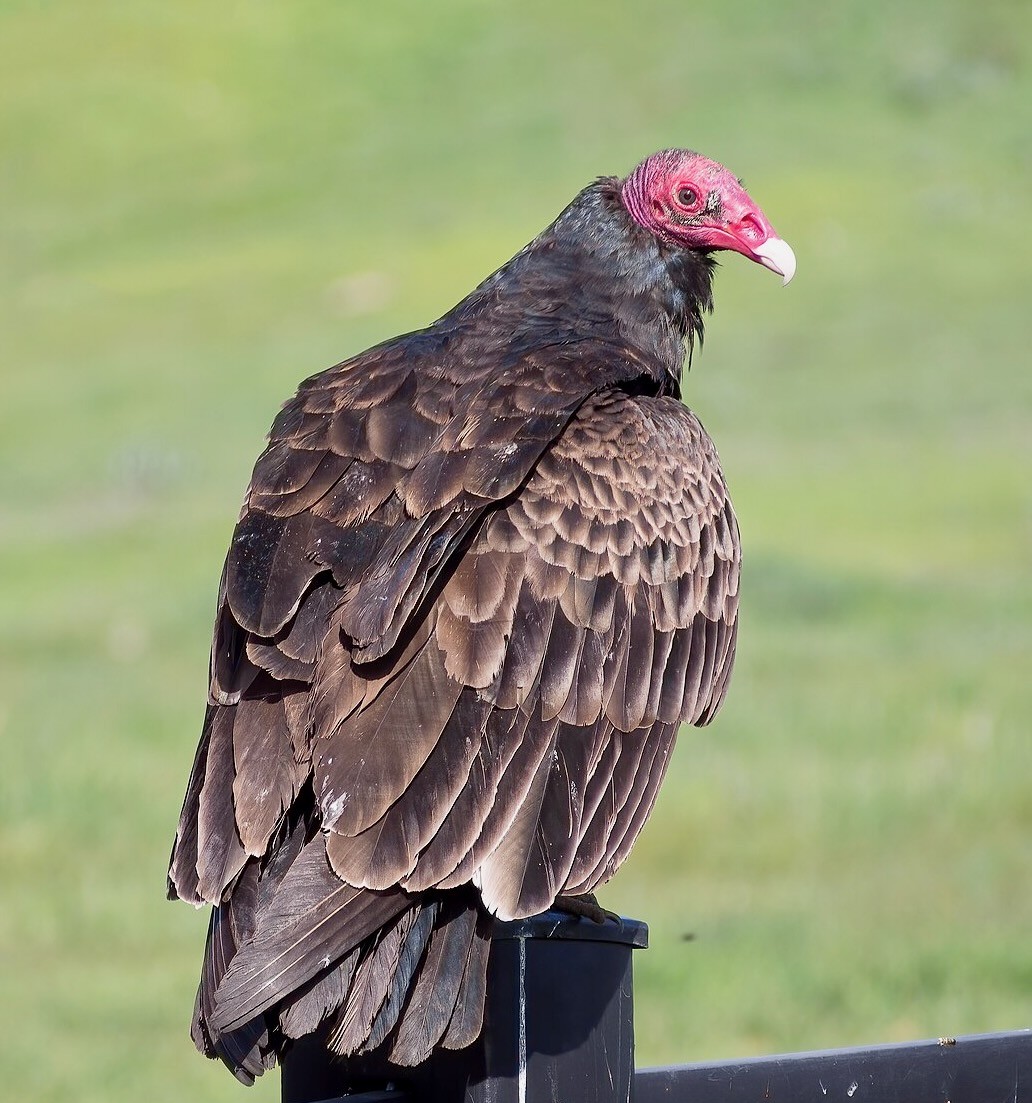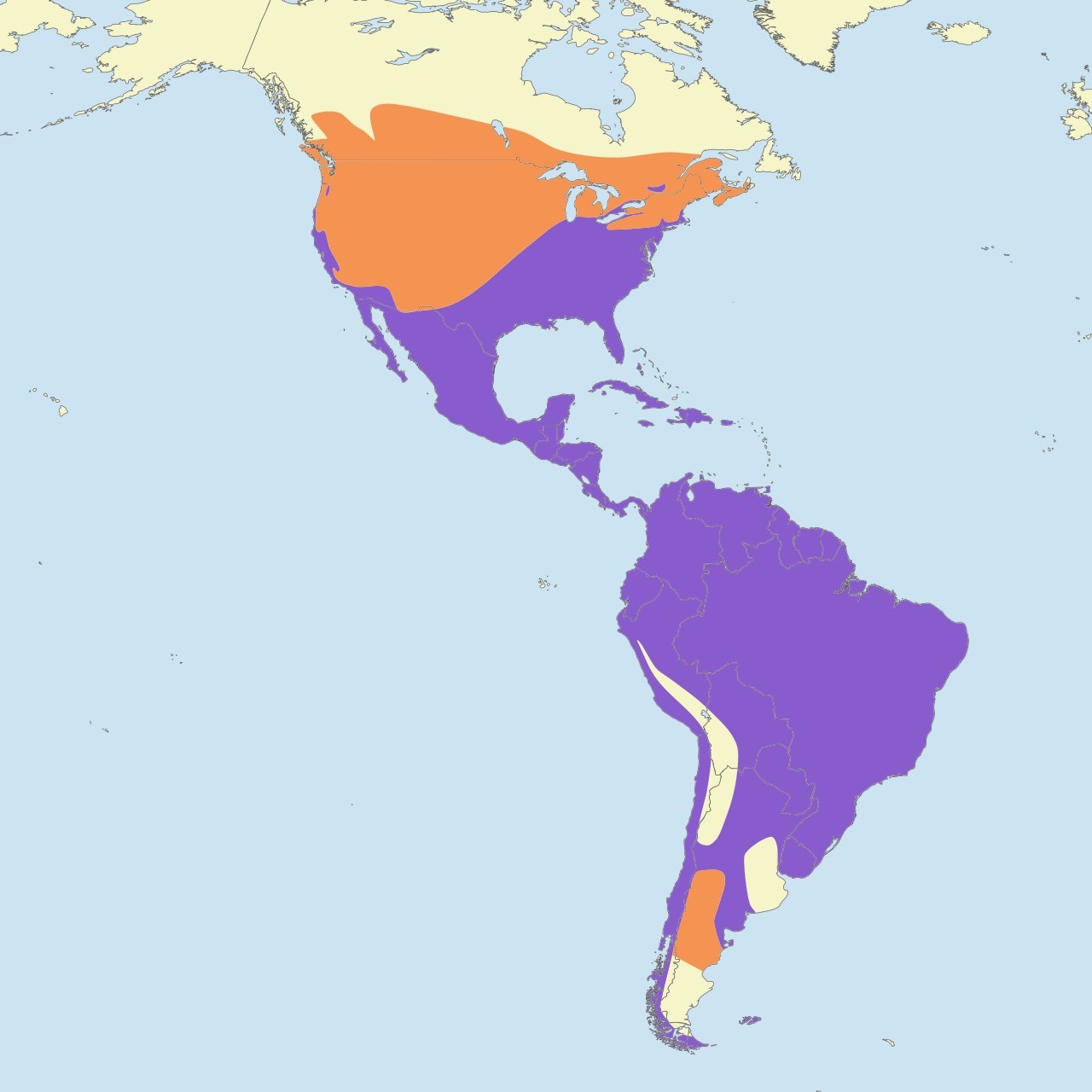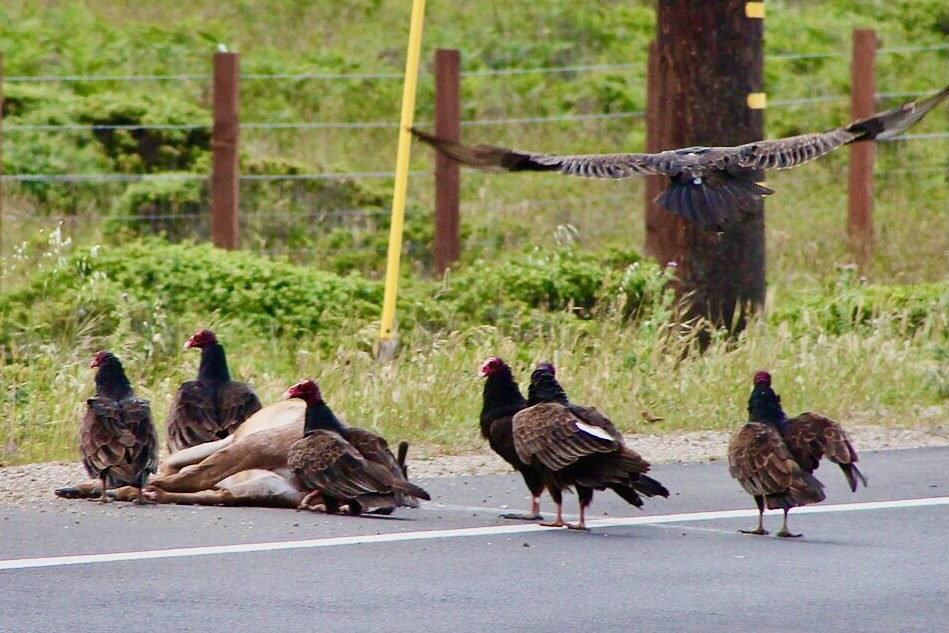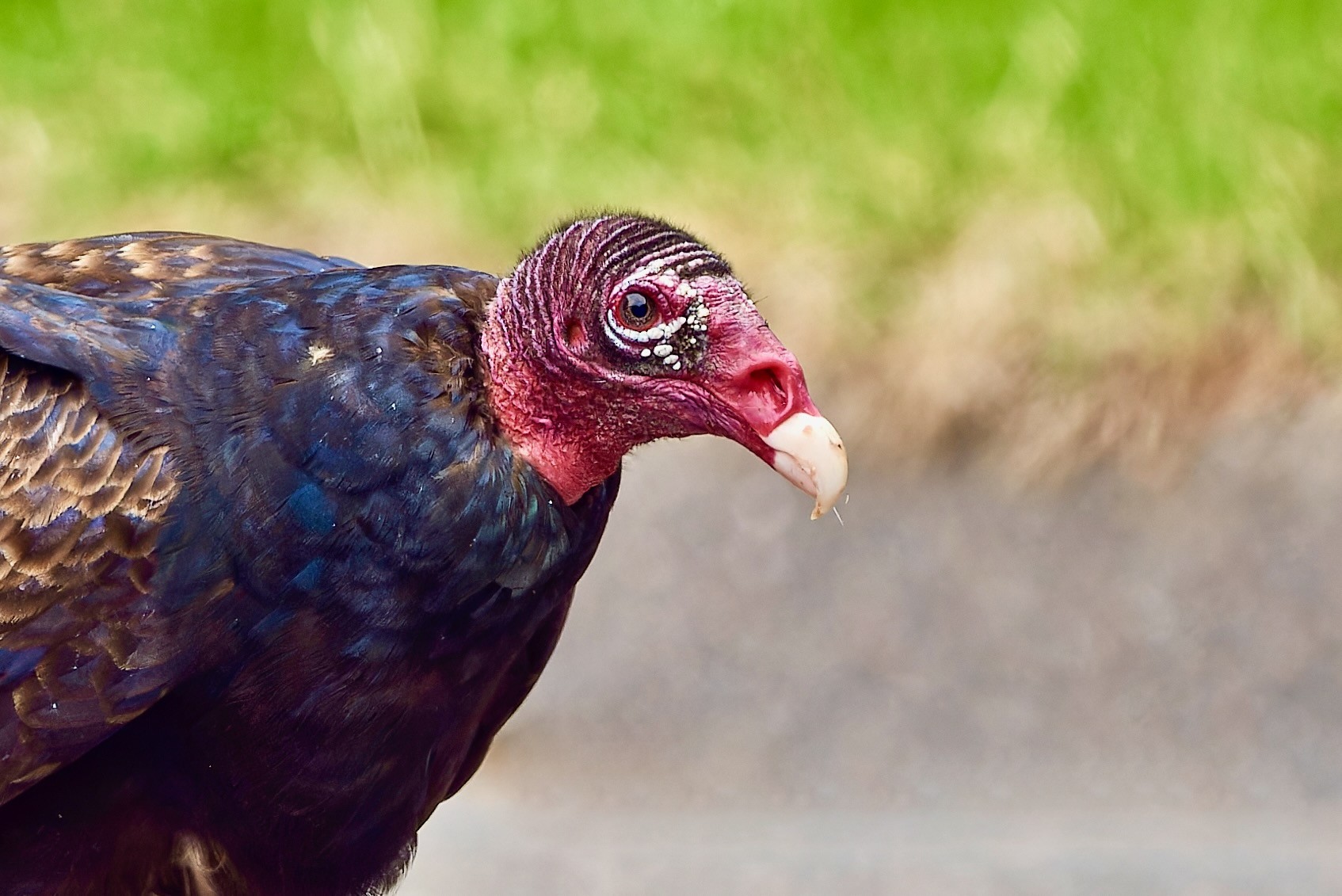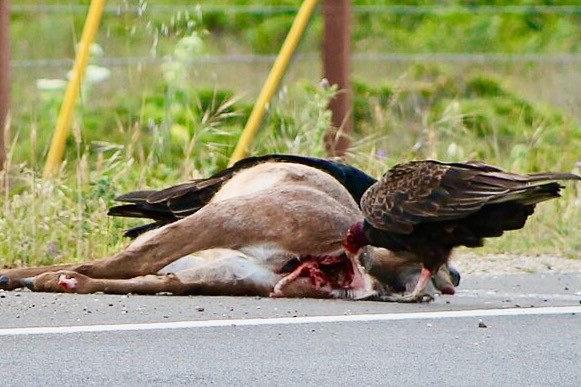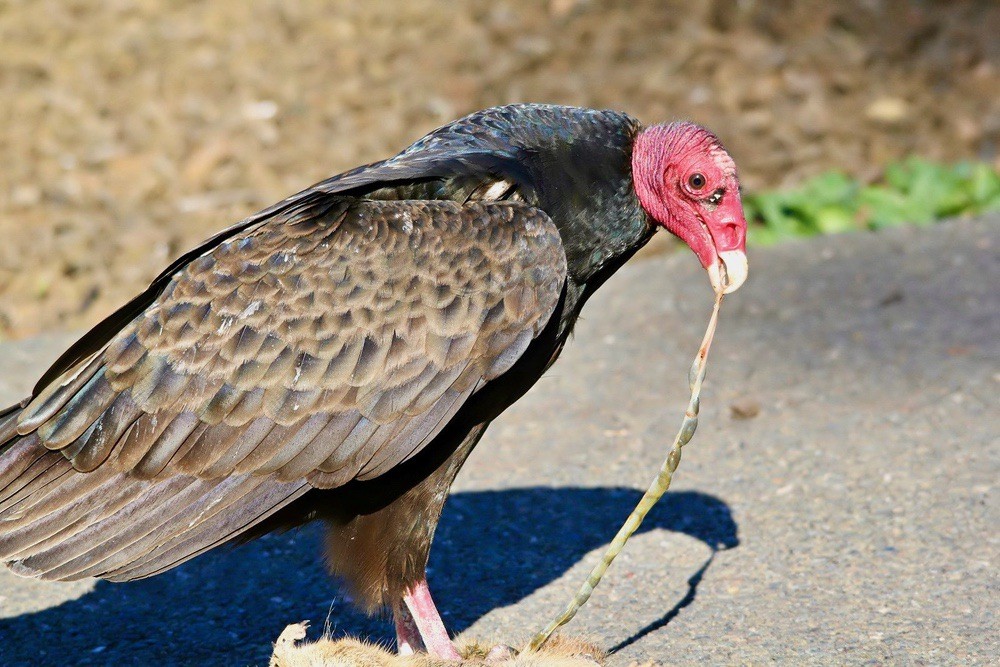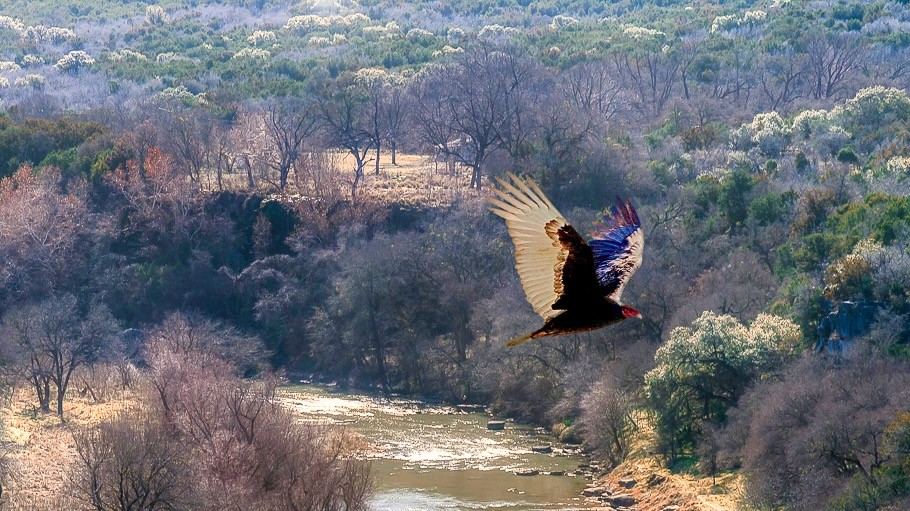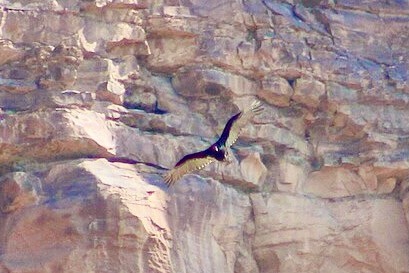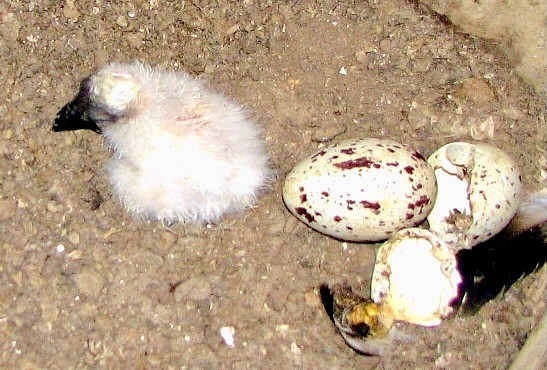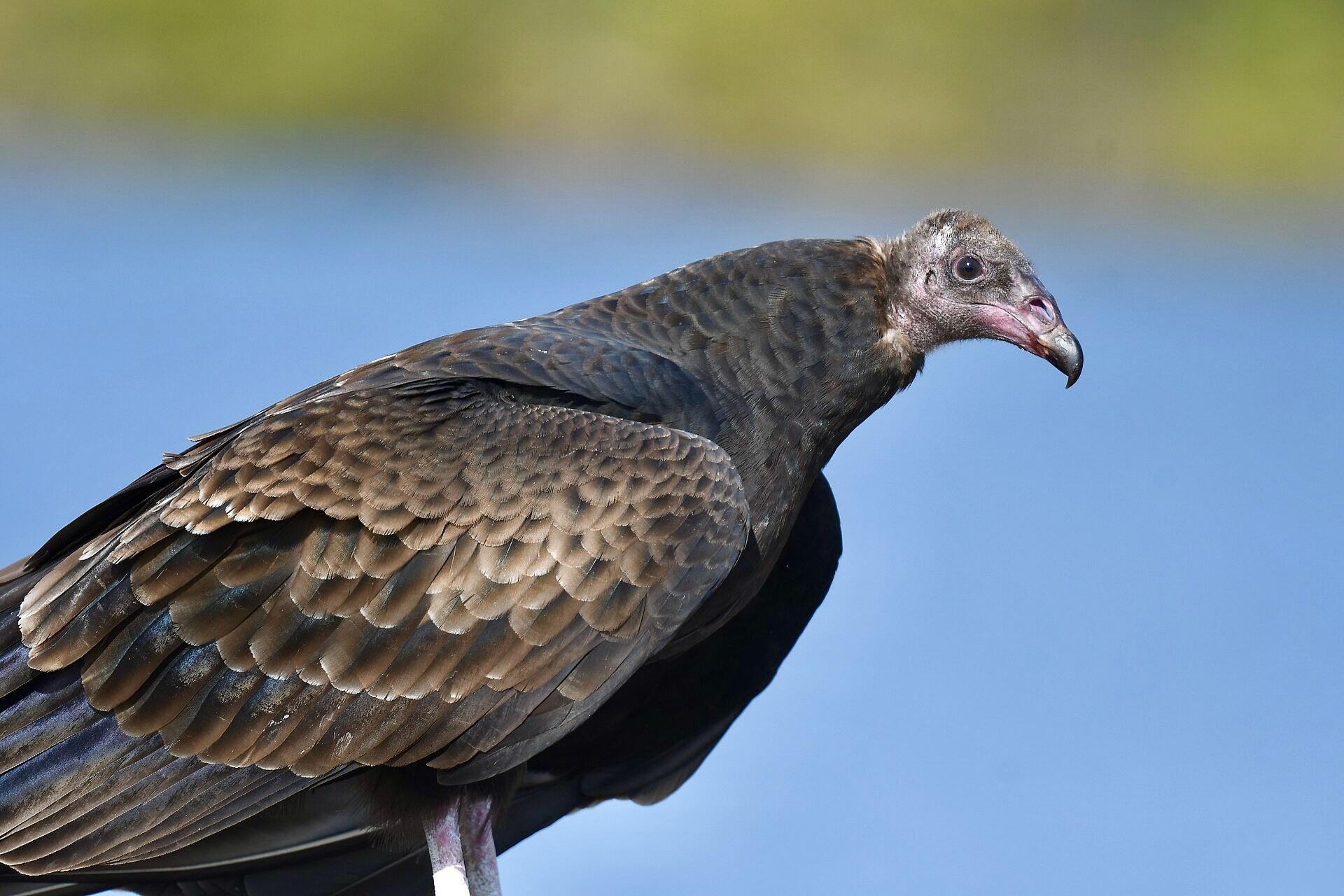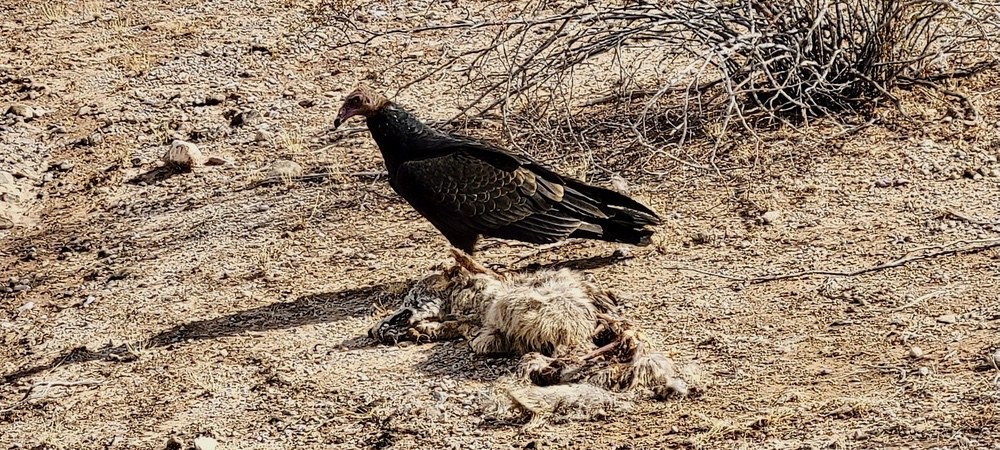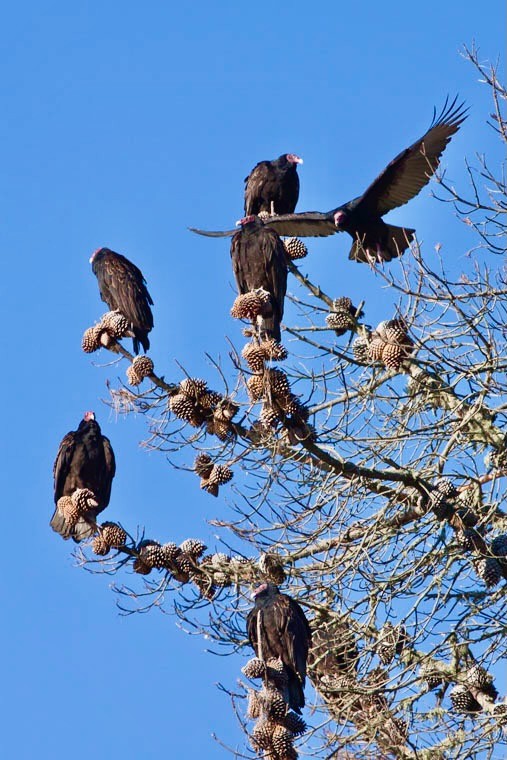Turkey Vulture
Records for Salter Grove from 2002 through July 2025 show that the Turkey Vulture has only been reported once in April 2018. It was probably a migrant soaring overhead on its way to better feeding grounds and to its nest from previous years.
The scarcity of sightings in the park is not surprising because carrion, the main food item of vultures is rare to nonexistent at Salter Grove. Roadkills and any other carcasses of dead wildlife in the suburban developments around the park are reported and quickly removed by Animal Control staff.
The Turkey Vulture is among a small group of historically southern species that has gradually expanded northwards during the 20th Century. In 1930, New Jersey marked its northernmost range but by the 1980's nesting birds were recorded for Maine and southern Canada. It is the most widely distributed vulture in the Americas, ranging south to Cape Horn at the southern tip of South America.
The Turkey vulture, like all vultures, feed on carrion and locates its food by smell. Gas companies add ethyl mercaptan, a chemical in carrion, to odorless natural gas so foraging vultures can help to identify the location of gas leaks.
Its stomach acid is so strong that it is unharmed by diseases such as anthrax, botulism, cholera, rabies, salmonella, tuberculosis, and any others that may taint the carcasses they eat. Its featherless head and habit of urinating on its legs further minimize the accumulation of pathogens associated with feeding on carrion. The presence of vultures generally helps to curb the spread of disease.
A publication dated 1899 stated that the Turkey Vulture is a rare straggler from the south with the earliest known specimen taken in 1861. It is now often seen along the highways soaring over forested and open areas in Rhode Island.
Rather than the warming climate, or the banning of DDT, the development of the interstate highway system probably has contributed most to the northward expansion of vulture populations. With increased vehicular traffic came more roadkills, especially of White-tailed Deer, which ramped up the carrion supply for the feathered scavengers.
In a warming climate, the Turkey Vulture is expected to extend the northern edge of its breeding range by as much as 14%. However, suitable nesting habitats such as large isolated rocky ledges remote from human activities are relatively few across the state and currently, Turkey Vultures are still more common as migrants than breeders. Two known communal winter roosts in Rhode Island are respectively located near the Connecticut border in Hopkington, and the Massachusetts border in Woonsocket.
For more information:
https://www.allaboutbirds.org/guide/Turkey_Vulture
https://www.audubon.org/field-guide/bird/turkey-vulture
https://en.wikipedia.org/wiki/Turkey_vulture
https://www.birdsbybent.com////////ch51-60/tvulture.html
https://www.newportthisweek.com/articles/vultures-now-common-in-rhode-island/
Clarkson, C. E., Osenkowski, J. E., Steen, V. A., Duhaime, R. J., and Paton, W.C. (2023) The Second Atlas of Breeding Birds in Rhode Island. Rhode Island Department of Environmental Management Division of Fish and Wildlife. pp.170-171.
Howe, Jr., R.H. and Sturtevant, E. (1899) The Birds of Rhode Island. p. 53.

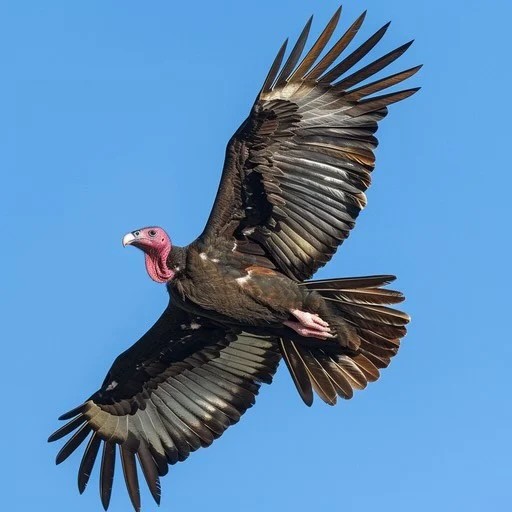
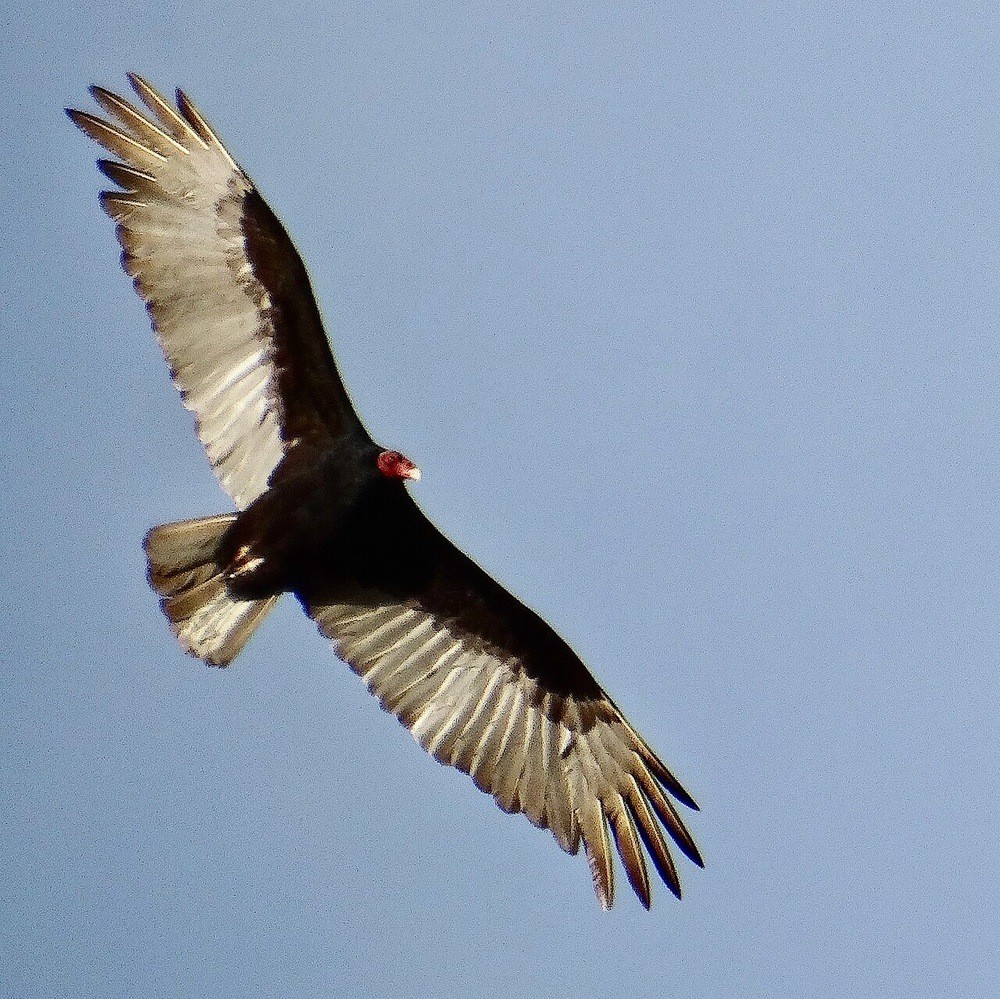
.jpeg?w=350?blur=10)
